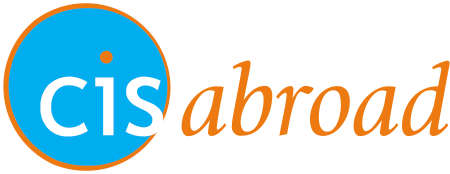People and Culture in Hawaii
Remember how your parents used to tell you to keep your elbows off the table during meals? Or that it’s rude to slurp your soup? Well there’s good news guys, these American cultures and customs don’t always translate to other countries! While the local people you meet won’t expect you to be fluent in their language, culture and customs, it is important to familiarize yourself with them.
Do you know how kissing, snoring and other things sound in other languages? That’s right, even sound effects can be translated!
#CISAlumniTip
“Do your best to fully immerse yourself in the culture and take advantage of the opportunities abroad. This is your chance to experience many new things: new people, new food, new places, new traditions, new languages, new everything! Even if you feel physically or emotionally tired, get out there, leave your fear at home, and bring a positive attitude. Don’t take anything for granted. Even the most seemingly insignificant experience will become a highly valuable memory in the future.” – Debora C., Intern in Barcelona Alumna.
The most important thing to remember while you’re abroad is that things will be different. But, different doesn’t mean wrong. Be open, be curious, and read more about the culture you will be stepping into. Get excited about LIVING the life you’ve only dreamt and read about until now!
People and Culture in Hawaii
Population: 1.4 million
Capital City: Honolulu
State bird: Nene (Hawaiian goose)
State fish: Humuhumunukunukuapua’a
Geography: The only U.S. state in Oceania, Hawaii is an archipelago in the Pacific Ocean.
Culture of Hawaii:
- Remember to show the utmost respect at temples and other sacred sites. Speak and walk quietly and try your best to leave the site the way you found it.
- Take care if you are learning how to surf – make sure to line up and do not get in the way of locals.
- Hawaiian time refers to the laid back atmosphere on the island. While everything might be quite on time, relax and go with the flow.
Non-verbal communication:
- Shaka: Feel free to flash the shaka as a way to say hang loose if someone shows you an unexpected kindness. If someone flashes you the shaka, give it back!
Other customs to be familiar with:
DO: Get used to the aloha spirit and embrace the lax Hawaiian lifestyle!
DO NOT: Refuse a lei or remove it immediately.
DO: Remove your shoes before entering anyone’s home.
DO NOT: Say “back in the states” – it’s better to say “on the mainland”.
Phrases to know before you go:
Aloha
A catch-all word of good intentions and feelings. Used as a greeting or parting, but also means love, affection, kindness and goodness. In Hawaii, people do things with aloha: drive, surf, work and live.
Mahalo
Thank you. Even though it is labeled on most waste bins, mahalo does not mean “trash.”
Kōkua
Help or support. Heard most frequently in the phrase, “Mahalo for your kokua” (thank you for your assistance).
Mauka & Makai
Mauka is towards the mountain; makai is towards the ocean. The two are used when giving directions on the islands.
Poke (POH-keh)
Deliciously yummy cubes of raw seafood (typically ahi tuna) mixed with sauces and onion. Called a poke bowl when served over white rice.
Windward & Leeward
The windward side of an island is exposed to the prevailing wind and is the wetter side. The leeward side is protected from the prevailing wind and is typically the drier side.
Pono
Another catch-all word. It is often defined as righteousness, but can also mean proper, moral, or fair.
Vog
Volcanic smog that periodically wafts over the islands from the volcano on the Big Island. Vog results in allergy symptoms for many.
Howzit?
How are you? A common and informal greeting. Used often in conjunction with “braddah,” which is a colloquial term for “brother” or “friend.”
Honu
Green sea turtle. These are endangered in Hawaii and signs on the beach often warn that touching them can result in hefty fines.
ʻOhana
Family, but used beyond blood relations to express love and commitment within communities, work places, etc.
ʻOno
Delicious. Used most often in combination with “grinds,” a term for food. Hence, ʻono grinds means delicious food.
Malasada
Portuguese donut, aka, the best fried dough you’ll ever eat.
Da kine
Whatchamacallit. An amazing versatile and vague phrase you can use when you don’t want to actually use words.
Kamaʻāina
Literally, child of the land. Used to describe any long-term resident of the Hawaiian islands, regardless of racial background. Used most often in reference to Kamaʻaina discounts, which locals can take advantage of. (“Kanaka maoli” commonly refers to people of full native Hawaiian decent.)
Keiki
Children.
Lanai
Balcony or patio.
Pau
Done or finished. Used most often in reference to pau hana, or “after work,” to mean happy hour.
Wahine & Kāne
Women and Men — important for bathroom distinctions.
Lei
A necklace made of flowers, shells, leaves, or kukui nuts. Contrary to most tourists’ expectations, leis are a normal part of Hawaii life for both men and women. Locals wear them to celebrate special occasions like birthdays or promotions.
Pupu
Appetizer.
Auntie & Uncle
What children are taught to call elders, regardless of familial connection.
Shaka
The hand gesture of extended thumb and pinkie. It generally symbolizes the “aloha spirit,” or the feeling of gratitude, friendship, understanding, or solidarity. Drivers will often use it on the road when you let them in, etc.

